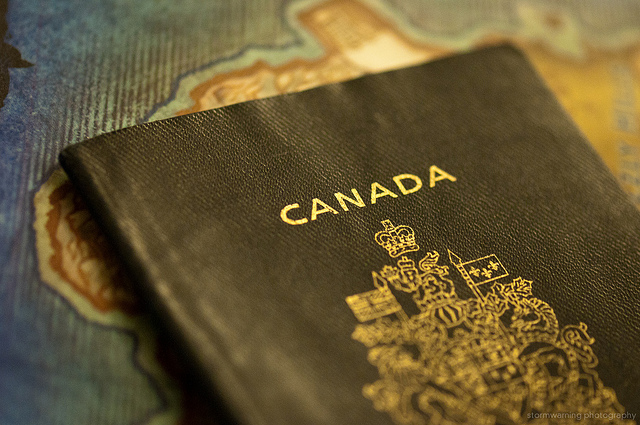On June 23, two articles on the Live-in Caregiver Program (LCP) came out at the Toronto Star (here and here). These articles featured findings from a study that I am part of: the Gabriela Transition Experiences Survey. Our study highlights that the majority of live-in caregivers who come to Canada were sponsored by employment agencies, that live-in caregivers work in diverse professions, but mostly stay in care work for the first three to five years after the LCP, and that live-in caregivers’ experiences of family separation were challenging.
There are many implications to this study, but suffice it to say that two conclusions hold true:
1. Live-in caregivers work hard both during and after the LCP to support themselves and their families and make important contributions to Canadian society.
2. Live-in caregivers consider themselves part of Canada and see their futures in the country.
Taking off my academic hat, and speaking now as a Filipino-Canadian, what worries me is how the federal government repeatedly disregards these findings. It scapegoats the Filipino community and constantly denies us our rights to settlement and citizenship.
Why else would Employment Minister Jason Kenney claim that Filipino families “abuse” the LCP by using it as a program of “hidden family reunification?” This is a statement our study disproves by showing that only one in ten out of the 631 live-in caregivers we surveyed were hired by their relatives. Kenney refuses to say where Citizenship and Immigration Canada (CIC) is getting its numbers.
Is this a case of ideology creating policy? Is this an instance where CIC looks at the numbers of Filipinos getting permanent residency through the LCP and thinks, ‘Oh wow, there are just too many Filipinos entering the country so this immigration flow needs to be stopped?’
This problematic article makes insinuations at the end that this is what is driving CIC. If this is in fact the case, then I am not surprised.
Historically, Canada has shut its doors on people of colour. My Chinese-Canadian partner reminds me of the Chinese-Canadian community’s history of exclusion in Canada and how spurious measures such as the head tax were used to deny them entry.
Another friend, who is South Asian, sites the example of Komagata Maru to show how the Canadian government turned its backs on the South Asian community and sent them back to India to be slaughtered.
All of this makes me ask: is the LCP the Filipino-Canadian community’s head tax? Is this an example of the way the Canadian government is using racist criteria to prevent Filipinos from settling into Canada?
And now I’ll put my academic hat back on.
The vast majority of people who come to Canada as live-in caregivers are Filipina. Before that, it was Caribbean women, and before that, most migrant domestic workers were Irish and British women.
What happened when more numbers of Caribbean and Filipina women started coming in as migrant domestic workers? Unlike Irish and British nannies, who automatically received permanent residence, Caribbean and Filipina women were only allowed to come here temporarily. It was only through the concerted efforts of migrant domestic workers and their allies — most of whom were Canadian families who felt strongly that caregivers were “good enough to work, good enough to stay” — that caregivers were allowed the ability to apply for permanent residency. This led to the creation of the Foreign Domestics Movement (FDM) in 1981, which later became the Live-in Caregiver Program in 1992.
So, why is CIC rewriting history by making wrong claims about the LCP?
The CIC claims that the LCP was created as a Temporary Foreign Worker Program, implying that it was only recently that live-in caregivers were given the right to apply for permanent residency. It makes no mention of the FDM and the reality that live-in caregivers since 1981 have had the right to become permanent residents. They come to Canada as ‘citizens-in-waiting’ and deserve to continue being able to permanently settle in the country.
In fact, to make the program more equitable, they should be given landed status upon arrival and should be given open work permits. Instead, contrary to what Canadian families and live-in caregivers want, during closed door consultation sessions on possible changes to the LCP, Immigration Minister Chris Alexander proposes to remove live-in caregivers’ automatic ability to apply for permanent residency by funneling their applications through the ‘Express Entry’ immigration program. This means that only those who the federal government invites to apply for permanent residency and who get employment offers can come into Canada permanently.
In short, this proposal makes Canadian immigration even more employer-driven.
Although I have previously criticized Canadian immigration policy based on both my academic research and my advocacy experiences, I’ve always secretly bought the rhetoric: that Canada is a fair and equitable society; that people from different cultural backgrounds are welcome; and that the promise of a better life in Canada is something that immigrants can rightfully aspire to have. Years of socialization and schooling in Canada, where my classmates and I learned to proud to be part of Canada’s multicultural landscape, have impacted the way I think.
Despite heaps of research and lived experience proving otherwise, as corny as it sounds, I still believed that Canada was a fair and just place where all people, regardless of cultural or religious belief and country of origin, were welcome. Now, though, with proposals to change the LCP, I wonder whether I was naive. With the mostly Filipina live-in caregivers about to be denied entry into Canada through Minister Alexander’s proposals, I’m realizing once again that history is indeed repeating itself.
Ethel Tungohan is a community advocate and a Grant Notley postdoctoral fellow at the University of Alberta.
Photo: flickr/Jeff Nelson




